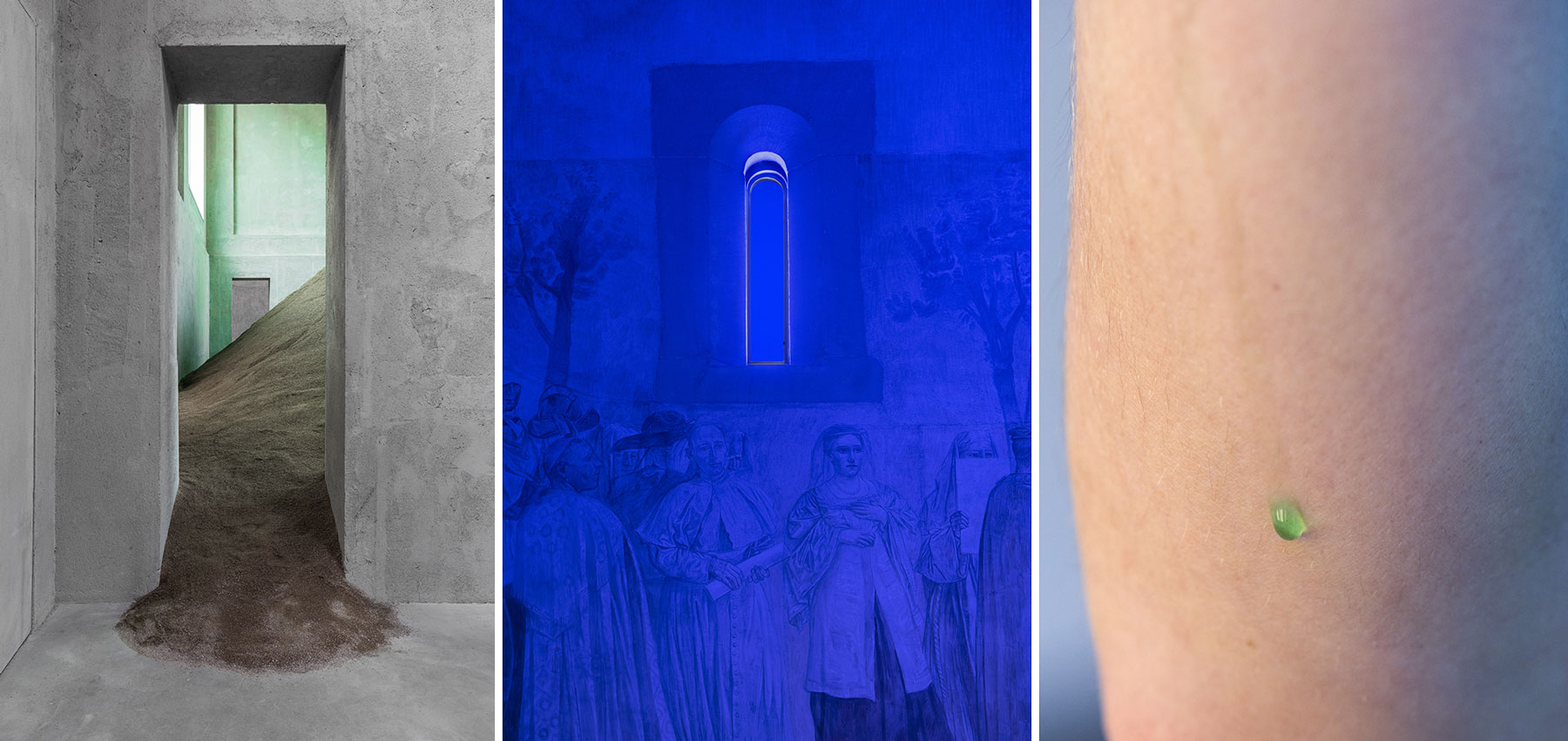ART-PRESENTATION: Pamela Rosenkranz-House of Meme
 Pamela Rosenkranz rose to prominence with a conceptual practice that encompasses sculpture, video, installation and painting. Her work questions the subjective element in the apprehension of an artwork, shifting the viewer’s focus toward the material, biochemical and neurological determinants of human behavior. Dubious of a worldview that places human beings at the center of the natural and material universe, the Zurich-based artist has also collaborated with thinkers from the broad philosophical movement known as speculative realism.
Pamela Rosenkranz rose to prominence with a conceptual practice that encompasses sculpture, video, installation and painting. Her work questions the subjective element in the apprehension of an artwork, shifting the viewer’s focus toward the material, biochemical and neurological determinants of human behavior. Dubious of a worldview that places human beings at the center of the natural and material universe, the Zurich-based artist has also collaborated with thinkers from the broad philosophical movement known as speculative realism.
By Efi Michalaroi
Photo: KUB Archive
Pamela Rosenkranz in “House of Meme”, her first solo exhibition in Austria, addresses the biological basis of our perceptions, working with synthetic materials, scents, earth and light, bacteria and parasites. Such existences below the threshold of human perception have provided inspiration for intellectual debates in recent years. The virus likewise currently represents a presence of the invisible. Rosenkranz formulates her artistic vision as both sublime and as unsettling zones that are ideally suited, as spatially expansive and yet intimate experiences, to Kunsthaus Bregenz. The colors employed by the artist, sometimes powerfully suggestive, and other times poetically delicate, are not representations of subjective imagination. Deriving from scientific knowledge, they are emblematic of chemical constellations. Frequently, they are evocative of human skin, the permeable organic interface between internal and external. Light sources hang in the spaces like Gothic windows. Their outward facing surfaces display fields of intense blue. They do not constitute images in any ordinary sense, but are rather glass windows emanating a saturated, intense blue light, accumulating like sediment within spaces of glass and concrete. Screens shimmer, providing depth, blue being the color of contemplation, associated with coolness, limitless-ness, and desire. In many religions blue is also a symbol of ascension and salvation. But colors are also events in terms of physics. They possess measurable wavelengths associated with the development of the sense of sight that took place underwater during prehistoric times. Rosenkranz employs aesthetics as a fundamental means of research into the sensory, placing it closer to the experiments of the late-Impressionists than Yves Klein, who produced monochrome blue paintings, consequently “reifying” (Rosenkranz) the hue by patenting it. The upper floor is home to a snake. It is a computer- controlled machine that reacts to electromagnetic radiation, sidewinding, raising its head and observing its surroundings, or biding its time motionlessly on the floor. Reflective scales conceal its network of sensors and semiconductors, while the inaudible sound of electronic noise recharges it. In terms of art history, the “snakebot” may be located within the tradition of kinetic sculpture, but is nevertheless based primarily upon scientific attempts to replace not only living beings with robots but also the organic with algorithms. Although its appearance could be perceived as artificial and unnatural, the robotic serpent still provokes feelings from the depths of our evolutionary past. Our eyes specialize in detecting the patterns of both a snake’s scales and its move-ments. Human eyesight has apparently improved significantly during evolution. What do we see when encountering a robot snake? Danger, beauty, or algorithms? The exhibition dissolves any separation between the natural and artificial. It becomes an animated “habitat” for a robotic creature that is controlled by our devices and which connects everything. Its perceptions reverberate throughout the entire building. Signals from our cell phones are already being fed into it even as we first encounter it. The movements of the snake in relation to our bodies, the contemplation of art, or what is being represented as a deeply archaic need in humans, but which also apprehends us physically, permeates the exhibition. The building be-comes an organism of expanded biological interactivity. In 2015 Pamela Rosenkranz conceived the Swiss Pavilion at the Venice Biennale. The intense green light permeating the building, which had been painted pale green, and the main space filled with viscous pink liquid were joined by a female computer voice. The aroma, the cause of which remained concealed, was strangely attractive. The spaces did not display anything that could have been designated a work of art. The void referred visitors back to their own perceptions and experiences, but any sensual certainty remained equivocal. In fact, the aroma had been synthetically produced, modeled on the smell of baby skin, which could be perceived as either attractive or repulsive, depending in on the individual. Rosenkranz creates constructions of meaning from pharmaceuticals, dyes, and other materials, examining their effects on individual sensitivities.
Photo: Pamela Rosenkranz, House of Meme, Installation view ground floor, Kunsthaus Bregenz, 202, Photo: Markus Tretter, Courtesy of the artist, © Pamela Rosenkranz, Kunsthaus Bregenz
Info: Kunsthaus Bregenz, Karl-Tizian-Platz, Bregenz, Duration: 17/4-4/7/2021, Days & Hours: Tue-Wed & Fri-Sun 10:00-18:00, Thu 10:00-20:00, www.kunsthaus-bregenz.at







Center: Installation view, Pamela Rosenkranz, Alien Blue Light, Installation view Kreuzgang Fraumünster, Zürich, 2018, Courtesy of the artist, © Pamela Rosenkranz, Kreuzgang Fraumünster
Right: Pamela Rosenkranz, Anemine (Detail) Installation view, Miguel Abreu Gallery, New York, USA, 2016, Photo: Marc Asekhame Courtesy of the artist © Pamela Rosenkranz

